Fifty More Classic Climbs of North America
In 1979, Steve Roper and Allen Steck released 'Fifty Classic Climbs of North America.' This modern take is for the weekend warrior.
Heading out the door? Read this article on the new Outside+ app available now on iOS devices for members! Download the app.
In 1979, Steve Roper and Allen Steck released Fifty Classic Climbs of North America, which has gone on to become one of our sport’s most revered tomes, right up there with The Freedom of the Hills. But as classic as it is, their list isn’t all that accessible. There’s a reason why no one has completed them all. (Recently, Hans Florine’s 1993 linkup of 20 Classics in 20 Days saw its first repeat.) Steck and Roper’s climbs were chosen for being historic, striking, and long. Excluded from the list are boulders, sport, or single-pitch trad climbs. Also, as a virtue of the time in which the list was written, it doesn’t include anything east of the Rockies, or any other countries in North America except Canada and the United States.
In light of this, I’d like to present Fifty More Classic Climbs of North America. Instead of the seven geographic areas Steck and Roper detailed—Alaska and the Yukon, Western Canada, Colorado, California, Wyoming, the Pacific Northwest, and the Southwest—which remain among the most well-known climbing destinations in the continent, I focused more on the regions and countries which did not appear. I also focused on shorter, more accessible routes, and tried to highlight moderates over stiffer grades. (Please feel free to contact me via email or Instagram to send hate regarding all the climbs I missed.)
The Continental United States
Home sweet home. While I selected a few from Colorado, California, and other well-known climbing locales, I focused on including lesser-known highlights.
The Nose (5.8 400ft), Looking Glass, North Carolina
The El Cap icon’s little cousin was called “The Best 5.8 Multipitch I’ve Ever Done,” by former Rock and Ice boss man Duane Raleigh. It was my first multi-follow, as well, and a must-do in the South, a seemingly easy trad line demanding deft footwork and routefinding from the uninitiated.
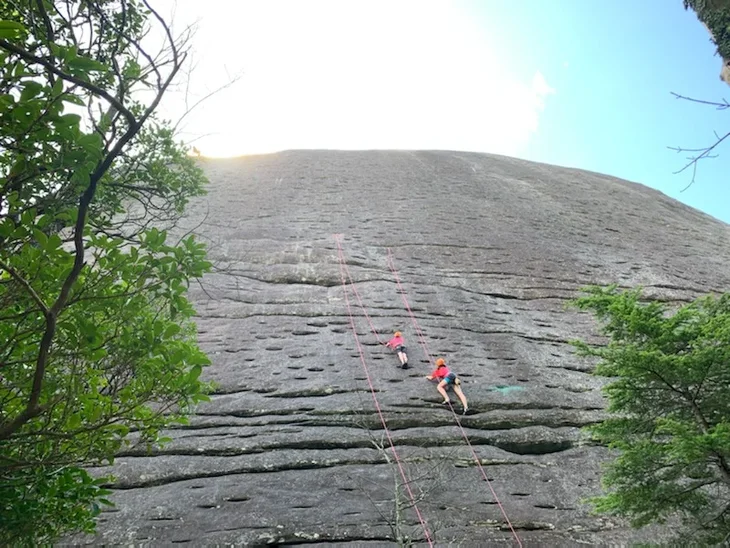
Frosted Flake (5.9), Rumbling Bald, North Carolina
The ultimate layback flake, Frosted is one of the best climbs at the Cereal Buttress, which is home to several moderate trad leads that could easily be on this list. The protection is bomber and it’s great fun to layback all the way up the flake, but if you’re leading, jamming makes placing pro much less awkward.
Millipede (V5), Horse Pens 40, Alabama
Andrew Bisharat’s thoughts on this funky V5 always stuck in my head. “[It] requires a very specific strength,” he wrote in Rock and Ice years ago, “one that perhaps can only be gained by squeezing the sides of a refrigerator and lifting it.” This one will have you rethinking your climbing career. It gave me a weird tendon injury that has never quite healed.

Breakfast Burrito (5.10c), Red River Gorge, Kentucky
A beginner Red Classic, Breakfast Burrito’s 5.10c grade depends on utilizing the rest mid-way up the line. If you blaze up this sucker, it quickly approaches 5.11 turf as it steepens near the top. Either way, just don’t run out of draws. There are nine bolts here.
Snozberries (5.11d), Red River Gorge, Kentucky
When I was a teenager I went to a kid’s climbing summer camp, and all this one irritating dude would brag about was how he sent a 5.13 called Snozberries at the Red. (I think it was once a 12a, but either way he was totally inflating).
His real yap material wasn’t sending the climb, but that when he reached the no-hands rest halfway up he found a porno mag wedged into a crevice in the rock. That was well over a decade ago, so I’m not sure if the mag remains, but it’s worth a try…

Golden Locks (5.9) Chattanooga, Tennessee
Likely the most popular route at T-Wall, this picturesque splitter crack is a must-do for gearheads. Long a stiff 5.8, it’s now a 5.9, though by far the cruxiest sections are the start, so some opt for pads and a spotter. The rest of the line is fairly obvious and protects well, though you’ll want to keep momentum to avoid getting pumped out.
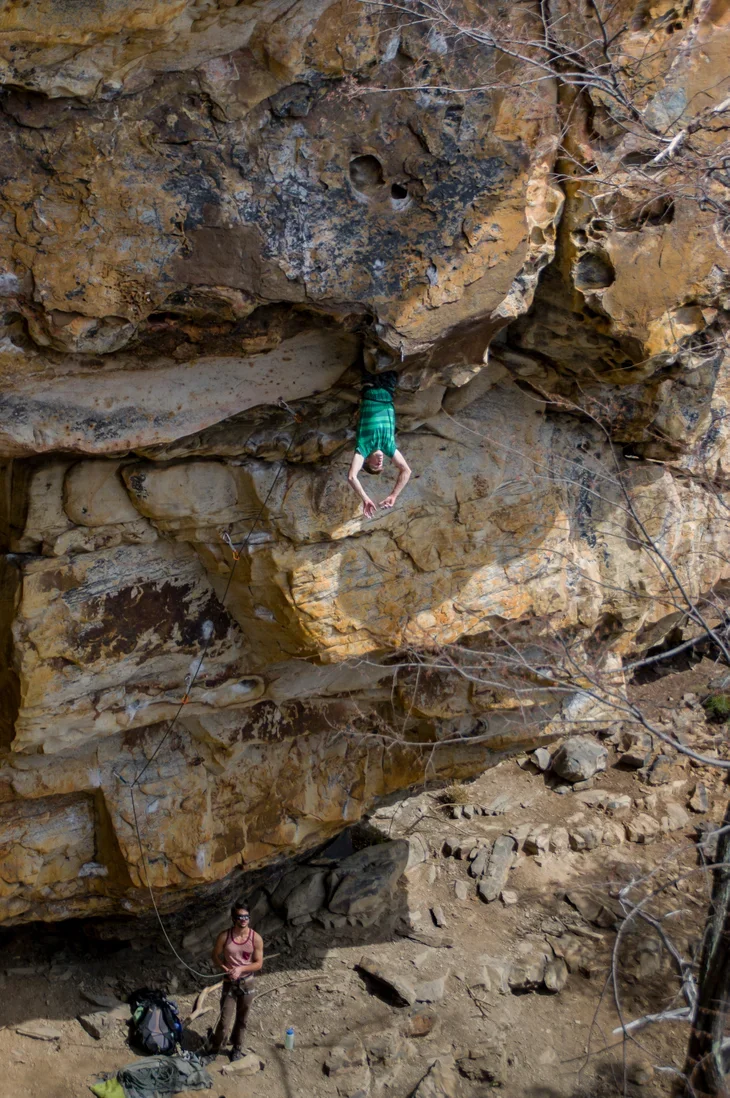
Born on the 4th of July (5.13a), Obed, Tennessee
This 130-foot layback line leads up to a sublime arete, making for a true Obed classic, far more enjoyable than the Tom Cruise film. A must-do at the grade, and it has permadraws!
Super Mario (V4), Stone Fort, Tennessee
A supremely satisfying kneebar sequence unlocks this varied, heavily-trafficked boulder, which has a bit of everything: crimps, pinches, jugs, and more.
Misty (5.10c), Sand Rock, Alabama
Sand Rock has a slew of stellar sport routes, so it’s hard to choose one, but Misty is a top shelf option. Varied and with a low crux, this one is a cruiser for the grade, offering both techy vert face and steeper terrain. Just be careful while cleaning—Misty was the site of a death last year.
The Snail Direct (V7), The Citadel, Alabama
Long a word-of-mouth crag, the Citadel recently opened to climbers after the Southeastern Climbers Coalition bought the property. The Snail (you’ll understand the name when you see it) is perhaps the most famous boulder in this crag, home to a V7 direct mantle and a V5 that leads up the snail-like prow.
Smooth as Silk (5.11-), Currahee Mountain, Georgia
The slabby gneiss of Currahee is one of the lesser-known spots in Georgia, which most folks only hit for Rocktown, but it has several four-star climbs, such as Smooth as Silk. This 5.11 finger crack blends crack and face, then heads up to a roof and includes some cool horizontal seams.
Golden Shower (V5), Rocktown, Georgia
This slopey boulder is a treat, and perhaps the finest line in Rocktown, finishing with a classic southern boulder mantel. Former U.S. president Donald Trump has reportedly made a few trips here. (It’s unclear if he sent or not, but he said he enjoyed it.)
Ecstasy (5.7 250ft), Seneca Rocks, West Virginia
A steep, nicely-protected three-pitch that’s probably easy even for 5.7, Ecstasy is a great introduction to easy leads and multis on gear. Its main downside is that it’s extremely popular, and can be crowded. Crux will be routefinding.
Four Sheets to the Wind (5.9), New River Gorge, West Virginia
This funky dihedral at the Junkyard Wall is varied, sustained, and not to be missed. Swapping between crack and slabby face and navigating the roof is the enjoyable bit.
Apollo Reed (5.13a) New River Gorge, West Virginia
Located at the Coliseum, Apollo Reed is a long haul and a great first 5.13, since it’s more of a stamina game than anything else. 11 bolts gets you to the top, although some have reportedly tackled this one on gear.
Nobody Here Gets Out Alive (V2), Hueco Tanks, Texas
Sit-start roof at Hueco that everyone and their mother seems to try (and post on YouTube). Easy and fun, with movement that you wouldn’t normally be able to find on a V2. A lower sit is reportedly V4.
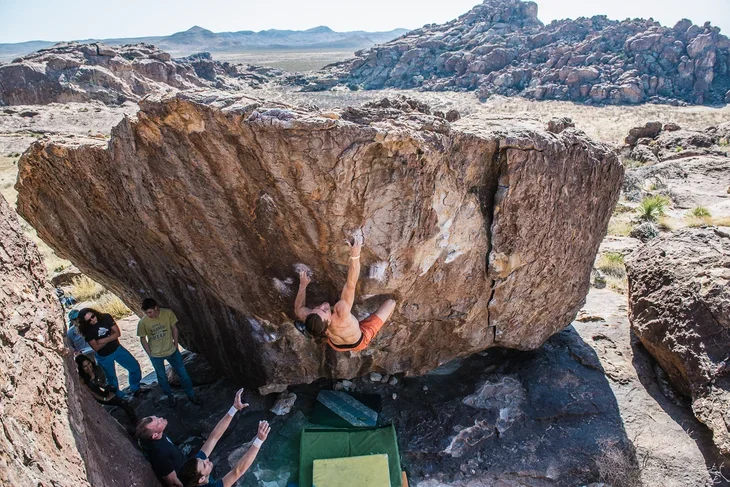
Learning to Crawl (5.12c), Reimers Ranch, Texas
A stalactite-ridden roof (see feature image), this fixed-draw pumpfest is a classic at Reimers, one of the main crags in Austin. I haven’t been on this climb, but there is reportedly an artificial (drilled) pocket. Skip it for good karma.
Sweat (5.7), Enchanted Rock, Texas
Short and sweet, Sweat is a great introduction to crack climbing in the States, going from big fist to hands to finger crack. Plenty of space for solid gear. This one is many locals’ first trad lead.
Supersoul Sureshot (5.12c) Horseshoe Canyon Ranch, Arkansas
Techy, beta intensive, and stiff for the grade, Supersoul Sureshot rewards the careful projector with spectacular movement.
Detox Mountain (5.12a), Jackson Falls, Illinois
One of the finest lines at Jackson Falls, this steep, 50-foot sloperfest remains sustained throughout, and is one of the taller lines at the crag.
Jungle Book (V8), Holy Boulders, Illinois
A Holy Boulders ultra classic that runs up an arete with powerful, dynamic movement and a massive swing from a sloper. Slap that sloper, cut feet, and hold on for dear life.
Foolish Behavior (5.10-), Wichita Mountains, Oklahoma
This crack climb is a bit short but a lot of fun. Crack work turns into slabby crimps on a face, and things get a bit runout near the top, but the fall zone is totally clear.
Great Expectations (5.5 180ft), Wichita Mountains, Oklahoma
This trad route at Elk Slabs is probably a doable free solo for a lot of folks, but it’d make an excellent first lead on gear or first multi. Expectations follows a prominent crack system up a friction-y slab before moving onto a flake and traversing to anchors below a headwall.
What Up Weasel (V7), Devil’s Lake, Wisconsin
Devil’s Lake has a slew of both boulder and rope lines. What Up Weasel is a star example of the former. A sit start leads into compression moves on a steep arete before pulling onto a face.
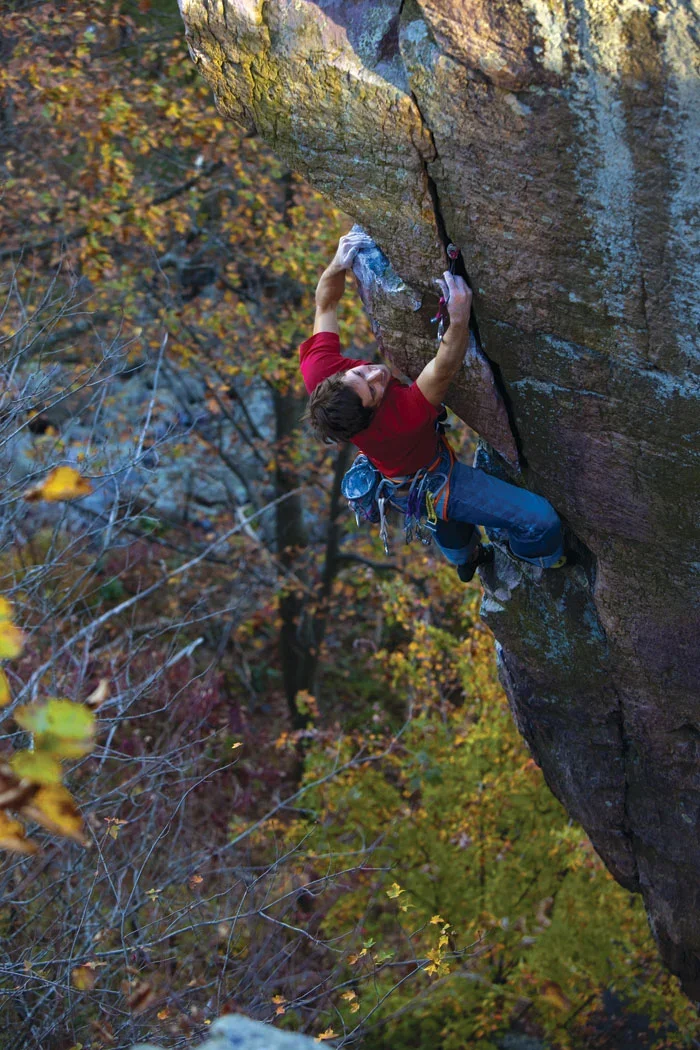
Whiskey a Go-Go (5.13a), Necedah, Wisconsin
One of the hardest lines in Wisconsin, Whiskey a Go-Go was originally tackled mostly on gear. Today, it’s fully bolted (by the first ascensionist! Don’t get riled up!) and probably a soft 13. Big power moves to small holds on a steep face. What more can you want?
Armed and Dangerous (5.10b), Rumney, New Hampshire
Formerly known as Armed and Dangerous and Off My Medication, this is a top-shelf Rumney sport route offering a bit of everything, moving from slab to juggy steeps with airy fall potential near the finish.
High Exposure (5.6 250ft), The Shawangunks, New York
Most of the routes here are newer lines. High Exposure is an exception, dating all the way back to 1941! Start with some stemming in a corner before moving onto a face and charging up an intimidating roof. These two easy pitches can feel far stiffer than they are thanks to the jaw-dropping exposure.
Son of Easy O (5.8 170ft), The Shawangunks, New York
Another Gunks classic, Son of Easy O has it all. Some jamming and micro face moves down low lead into a lengthy traverse, powering into a pumpy roof.
Adair by the Sea (5.10b), Acadia National Park, Maine
The sprawling cliffs and rocky headlands of Acadia National Park make it one of the finest destinations in the northeast, and one of the best destinations for climbers looking to tackle a sea cliff. Adair (or A Dare) by the Sea is one of the best routes at the park’s Otter Cliffs. This route actually graced the cover of Climbing back in the early 1970s.
Bolted for the lower sections, Adair goes on gear once it turns into a finger crack, but the difficulty eases considerably here. You can also easily top rope this line and most others at Otter. I covered Acadia in more depth in a climbing holiday destination guide last year.
Head Arete (5.10), Acadia National Park, Maine
Another Otter classic, the techy face climbing on Head Arete is a full-value experience that’s well-protected (mostly bolted) and offers a mellow walk-up approach.
Who’s Your Daddy (5.12c), Bolton, Vermont
Solving the lower boulder problem and overcoming Daddy’s roof crux gives no respite. Now you’re just on a sketchy slab. Tread with caution!
Corrugation Corner (5.7 300ft), Lover’s Leap, California
Tracking from a corner out onto a face before ascending a chimney and then traversing to a spectacularly exposed arete, Corrugation Corner has something for everyone. Widely considered one of the best climbs at Lover’s Leap. This one can be approached using Surrealistic Pillar (5.7) for a longer odyssey.
Illusion Dweller (5.10b), Joshua Tree National Park, California
This J-Tree crack dates to the early 1970s (Matt Cox, Steve Emerson, Spencer Lennard). A low crux, solid gear, and plenty of variety to jam, layback, and generally have a good time.
Epinephrine (5.9 1,600ft), Red Rock Canyon, Nevada
I tried to avoid big, long, committing routes on this list, in the spirit of offering something different, but you can’t miss Epinephrine. There are a lot of folks out there who’d call this the best multipitch in the country. It’s certainly one of the most popular. Nine pitches, probably soft for the grade if you’re comparing to Yosemite walls, but very sustained. A megaclassic.
Alaska, Hawaii, Puerto Rico, and Canada
Most folks will have to hop on a plane to visit these destinations, but each offers so much climbing that it’s laughable to pretend to list the “classics” with half a dozen mentions. Puerto Rico alone now has hundreds of routes. Canada? Alaska? Give me a break…
Cassin Ridge (5.8 WI4 8,800ft), Denali, Alaska
Steck and Roper actually had the Cassin on their list, so I’m sort of cheating here. But you simply can’t write a list of classic North American climbs without dropping one of the proudest lines on our continent’s highest peak. 65-degree snow and ice, 5.8 rock, and big exposure. There are harder routes on Denali, but the Cassin is perhaps the most beautiful, and earns its salt as one of the most famous alpine climbs in the world.
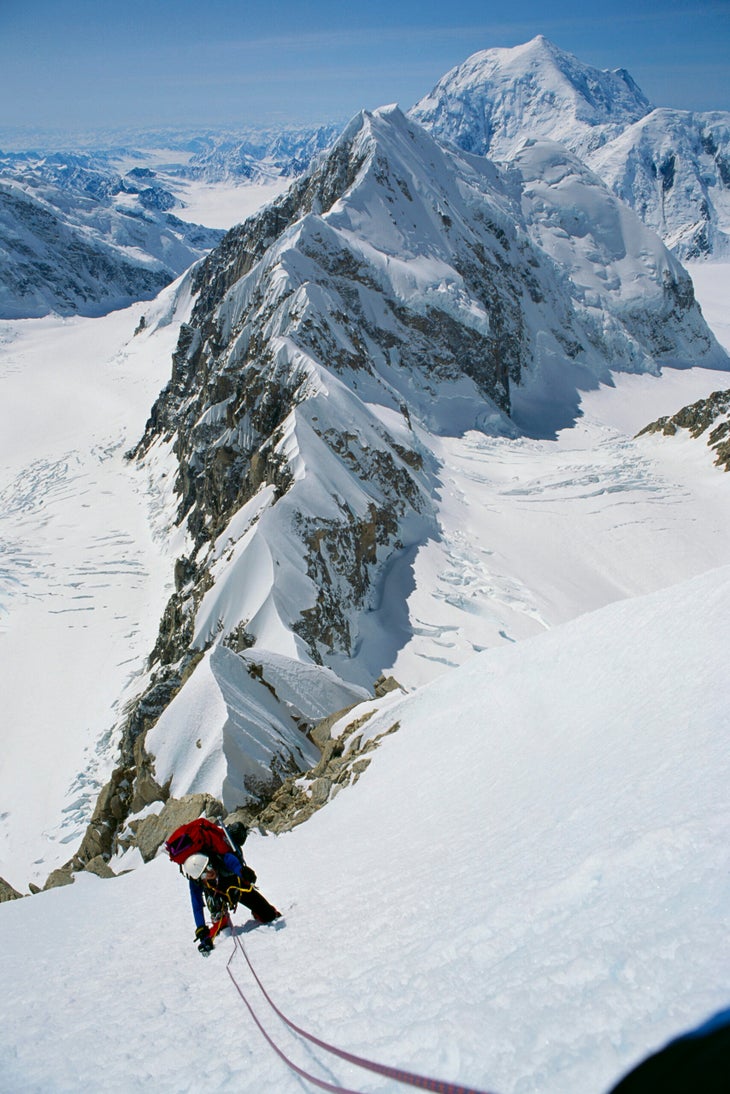
Toto (5.10a 500ft), Archangel Valley, Alaska
Easier cracks lead into several 5.10 finger and handcrack pitches higher up, with a walkoff bail before things get harder. Toto takes parties up the main buttress of the “Diamond,” the most prominent formation in the Archangel Valley.
Blanca Nieves (5.8), Caliche, Puerto Rico
This steep limestone face looms out of the surrounding jungle, and is a short drive from San Juan. Like most of the climbing in Puerto Rico, Blanca Nieves is bolted (and heavily so). Still, it’s a classic at the grade, and makes for a fun warm up if trying harder things at Caliche.
El Jíbarito (5.10b), Flying Coconut (Ciales), Puerto Rico
Jugs lead to pockets of increasing difficulty, before a long slabby finish. A Puerto Rican classic and a must-do for a PR climbing trip.
Dragon Slayer (5.12d), Mokule’ia, Hawaii
Mountain Project calls this one “ THE 5.12 test piece in the state of Hawaii.” Brutally thin crimps up a sustained arete, Dragon Slayer earns its 12d status and then some.
T-Rex (V6), Waimea Bay, Hawaii
This roof problem pulls jugs to a small roof, then over and up a face on tighter crimps and a sharp pocket. There’s a few different ways to do this one, all fun.
NOTE: The Aloha State remains a bit dicey in terms of access, and there are certainly great climbs, particularly on Maui, but you’re going to have to put boots on the ground and meet some locals to do the spot justice. I chose the two above on Oahu because they’re public knowledge and well-regarded.

Moby Dick (5.11c), Kamouraska, Quebec
Certainly one of the most picturesque climbs anywhere, pulling the roof and mantling Moby Dick is likely enough to make anyone feel like a champion. A stellar line to snap shots for the gram.
Exasperator (5.10c), Stawamus Chief, British Columbia
This granite finger crack is technically two pitches, but can easily be done in one with a 60-meter rope. Techy footwork with a mixture of solid and weak finger locks.
Yellow Fever (5.9), Flatrock, Newfoundland
Yellow Fever appears a fan-favorite at Newfoundland’s Avalon Peninsula crag of Flatrock. Track a distinct corner and keep an eye out for spots to place pro, as they aren’t always obvious.
Mexico and Central America
There’s more in Mexico than El Potrero Chico, but much of the climbing elsewhere and in other Central American countries is poorly developed. Lots of potential for new routes!
Time Wave Zero (5.12a 2,300ft), El Potrero Chico, Mexico
The crown jewel of El Potrero Chico, Time Wave Zero, is one of the longest fully-bolted routes anywhere in the world, an odyssey of moderate face climbing interwoven with cruxes. Time Wave’s 23 pitches are usually tackled in a day, but some parties opt to camp on the wall.
Will the Wolf Survive (5.10a 400ft), El Potrero Chico, Mexico
If Time Wave Zero is too difficult for your party, try Will the Wolf Survive, which offers three pitches of 5.8/9 and a 10a mega-exposed finale.

Corrosion (5.10d), Lake Amatitlan, Guatemala
Corrosion is a classic bolted crack and face route at a small crag only a short drive from Guatemala City. Climbers should also stop by Cerro Quemado, which is a few hours east, near Xela.
Paraiso (5.10a) Playa Frontón, Dominican Republic
Mellow, juggy climbing at the beautiful beachfront crag, Paraiso is one of DR’s best. For an added challenge, use this as a warmup leading into El Cumple de Macky (5.11) above.
Plumeria (5.11), Malpaís, Costa Rica
Slabby moves on microedges guard the oceanside chains of Plumeria at Malpaís, one of the most pristine crags in Costa Rica. Head into nearby Cabo Blanco National Reserve to see native fauna.
Stairway to Heaven (5.12a), Mana Wall, Panama
The basalt columns of Mana harbor a number of classic lines, including Stairway to Heaven. Limber up and expect lots of stemming!
